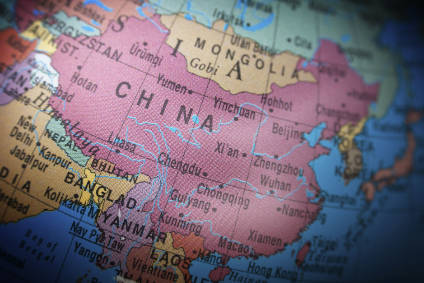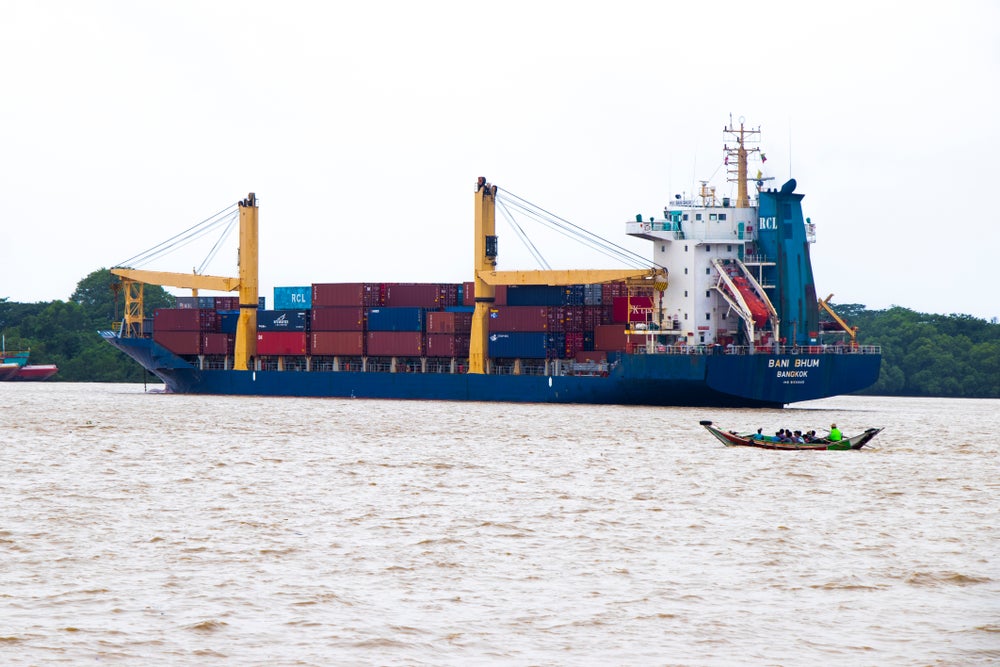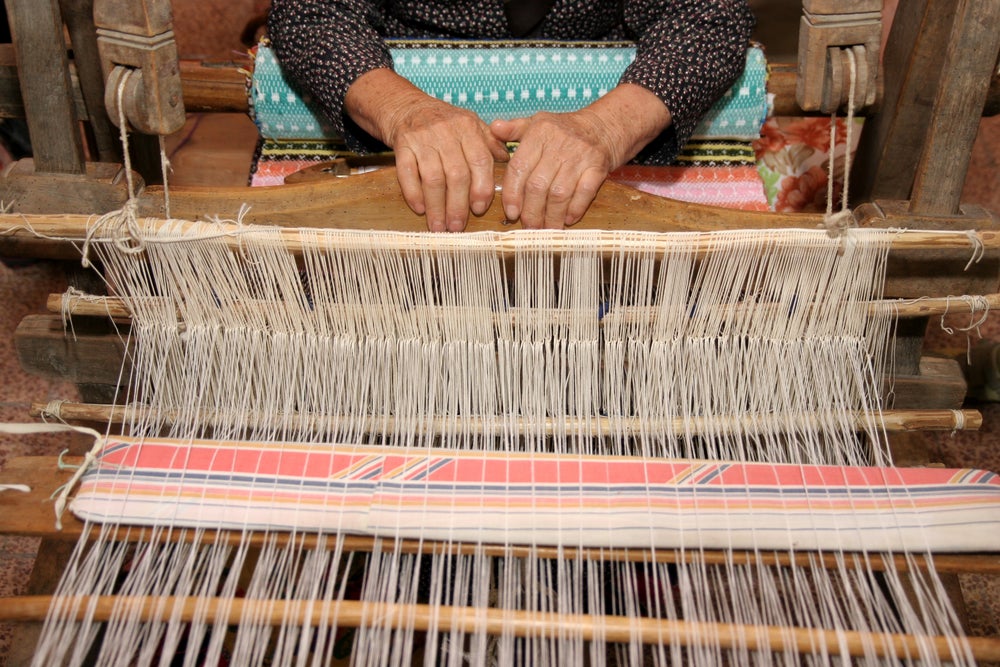
Despite China officially ending its “re-education through labour” programme in 2013, claims persist of forced clothing and textile labour in Xinjiang’s internment camps. The growing problem should also send warning signs to companies importing goods from the region.
Disturbing media reports on detentions of ethnic Muslim minorities in “re-education camps” in the Xinjiang Uyghur Autonomous Region in north-western China have multiplied since mid-2017.
The concerns have started to lose business for Chinese companies. US sportswear-maker Badger Sport last month cut ties with Chinese supplier Heitain Taida Apparel Co Ltd over its lack of confidence about Heitain documents supposedly demonstrating it had not used forced labour at its facility in Xinjiang.
It has not helped that reports have indicated the use of detained minorities in Xinjiang – 45% of whose population consists of mainly Muslim Uyghurs – for garment production is actually stated government policy.
Comments by Sun Ruizhe, vice-president of the China National Textile and Apparel Council (CNTAC), a state body, have been reported in the New York Times, which cited a March 2018 piece on the China Cotton Textile Association (CCTA) website.
See Also:
He apparently said Xinjiang planned to recruit from three main sources to increase the textile and garment sector’s workforce by more than 100,000 in 2018: impoverished households, struggling relatives of prisoners and detainees, and the camp inmates, whose training could be combined with developing the textile and apparel section.
How well do you really know your competitors?
Access the most comprehensive Company Profiles on the market, powered by GlobalData. Save hours of research. Gain competitive edge.

Thank you!
Your download email will arrive shortly
Not ready to buy yet? Download a free sample
We are confident about the unique quality of our Company Profiles. However, we want you to make the most beneficial decision for your business, so we offer a free sample that you can download by submitting the below form
By GlobalDataThe Chinese government has robustly denied all such claims – indeed Ruizhe’s comments no longer appear on the CCTA website. In a press conference on 20 December, China’s foreign ministry spokeswoman Hua Chunying branded the claims of forces labour in Xinjiang “a malicious attack that severely distorts the facts.” She added that she could understand why US President Donald Trump complains so much about the media.
Large-scale use of forced labour
However, speaking to just-style, human rights observers say they have no doubt that large-scale use of forced labour for garment and textile production is already under way – aiding goals to create an industry that has deep backward linkages, given Xinjiang is China’s top cotton-growing region.
This includes, activists claim, in the ‘re-education’ centres of Uyghurs where they are taught Mandarin and about Chinese law. “According to recent reports from people who recently left the region, there is garment production within the camps, and there are cases of people getting released from the camps only to be forced to work at nearby factories, including garment factories,” says Nicole Morgret, the Uyghur Human Rights Project’s project manager.
“We have also been told of people who are pressured to work in garment factories for little or no wages by threat of being sent to the camps,” she adds.
Morgret says her sources argue that the demographics of these centres (which were recently visited by Western journalists) belie the Chinese government’s official line that there are no forced labourers but members of an ethnic minority receiving vocational training to participate in China’s economic rise.
“Many people being sent are highly educated, elderly and successful business people, so the narrative of helping them with vocational training makes no sense at all,” Morgret says.
“Sending people to factories connected to detention centres or forcing them to work in one after being ‘released’ was a part of the old ‘re-education through labour’ system, which appears to have been recreated at a large scale,” she adds.
According to a recent report on the camps by human rights group Bitter Winter, these institutions are indeed camps and living conditions are poor.
The report cites an Uyghur woman who claimed her husband was sent to a camp for six months for reading scripture; he was then sentenced to a further five years of imprisonment including forced labour. She said 17 or 18 people lived in a room measuring about 500 square feet, including a washroom.
The woman said: “During the daytime, my husband is required to study and recite policies and regulations, and he is also required to perform unpaid labour. He has been assigned to make naan bread. Some other Muslims have been sent to work at a socks factory.”
Scale of the claims
Darren Byler, an anthropologist at the University of Washington, who has researched the region extensively, says it is hard to assess the details and scale of the claims of forced labour abuses, given that the developments are fairly recent.
But a Uyghur friend of his is held in a camp, operating an industrial sewing machine despite being highly educated. “They officially label him a tailor, but in fact he is churning out clothing for commercial consumption,” Byler told just-style. “His family is very upset, and within the first nine months of his imprisonment they were not able to contact him except for three-minute phone calls each month.”
Byler estimates that 10% of the entire Uyghur population is being held in camps, with a substantial share of the rest living around the camps to support detained family members with diet supplements and gifts. Given Uyghur American Association population estimates of between 11m and 15m Xinjiang Uyghurs, if true, the size of these institutions would be vast.
Statistical evidence
The local majority ethnic Han population is benefiting from the system, as they are employed to provide jobs as security guards and instructors – yielding data that has been researched by academics that gives some statistical justification to the human rights group claims.
For instance, work by Adrian Zenz, a researcher at the European School of Culture and Theology in Germany, was published in November by the US-based Jamestown Foundation.
Zenz explained how he had examined Chinese government procurement and construction bids, along with public recruitment notices associated with the re-education campaign, to collate evidence.
Bid descriptions indicate both the construction of new re-education facilities, as well as upgrades and enlargements of existing ones. Some pertain to adding sanitary facilities, warm water supplies and heating or catering facilities, indicating that existing buildings are being used to house more people for longer periods of time.
Many bids, his research showed, mandated the installation of comprehensive security features that turn existing facilities into prison-like compounds: surrounding walls, security fences, pull wire mesh, barbed wire, reinforced security doors and windows, surveillance systems, secure access systems, watchtowers and guard rooms or facilities for armed police.
“Staff and teacher recruitment notices for Xinjiang’s numerous new ‘educational training centres’ often required no specific degree, skill, or teaching background,” Zenz wrote.
“Instead, they frequently preferred recruits who demonstrated strong ideological conformity, army or police experience, or called for ‘training centre policing assistants.'”
According to Byler, it may be possible to see trucks carrying industrial goods, including garments, entering and leaving the camps. In some of the government propaganda videos it is possible to identify specific companies that are involved, he claimed, while admitting tracing is difficult, partly due to individual companies operating multiple factories.







